Softwood or Hardwood Pellets: Which Is Best for You
Wood pellets are a highly efficient and eco-friendly type of renewable fuel. Their combustion efficiency can exceed 80%, far higher than the roughly 60% of traditional coal. When burned, they produce much less sulfur dioxide, nitrogen oxides, ash, and dust. This makes them a cleaner and safer option for heating.
Softwood and hardwood pellets are two of the most common choices for both home heating and industrial use. While both are widely available, they differ in how they burn and what they're best suited for. So which one is the better fuel?
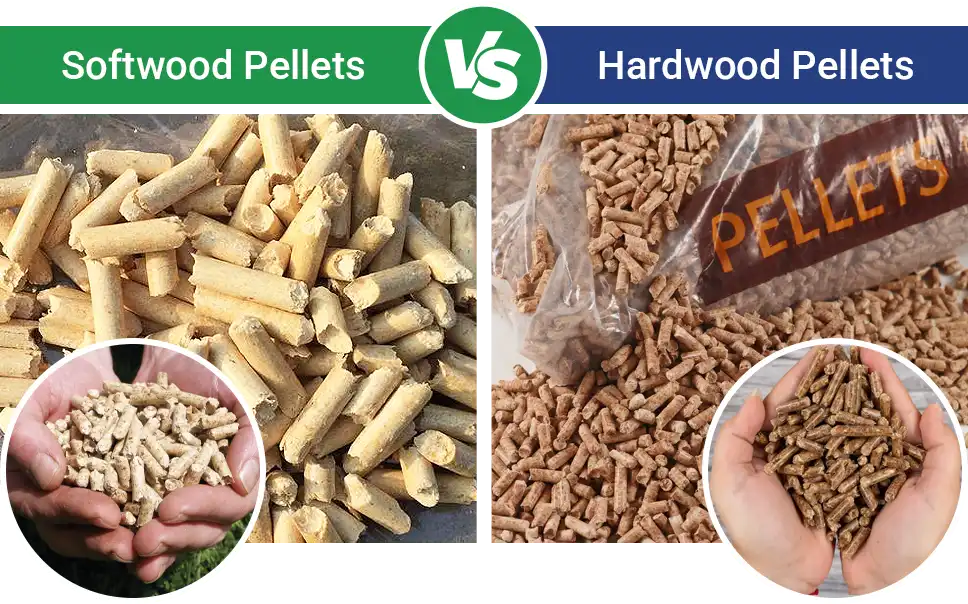
Hardwood vs Softwood Pellets: Key Differences
To choose the better fuel, it's important to understand how they differ. Here are the main differences between the two:
1.Heat Output and Combustion Performance
Softwood pellets are usually made from coniferous trees like pine, fir, and spruce. These woods contain more natural resin, which makes the pellets easier to ignite and quicker to reach high temperatures. Their heat output typically ranges from 8,000 to 8,900 BTU per pound.
Hardwood pellets come from deciduous trees such as birch, poplar, and elm. With a denser structure, they take slightly longer to ignite but burn more evenly and provide steady heat. Their heat value generally falls between 8,000 and 8,500 BTU per pound-only slightly lower than that of softwood pellets.
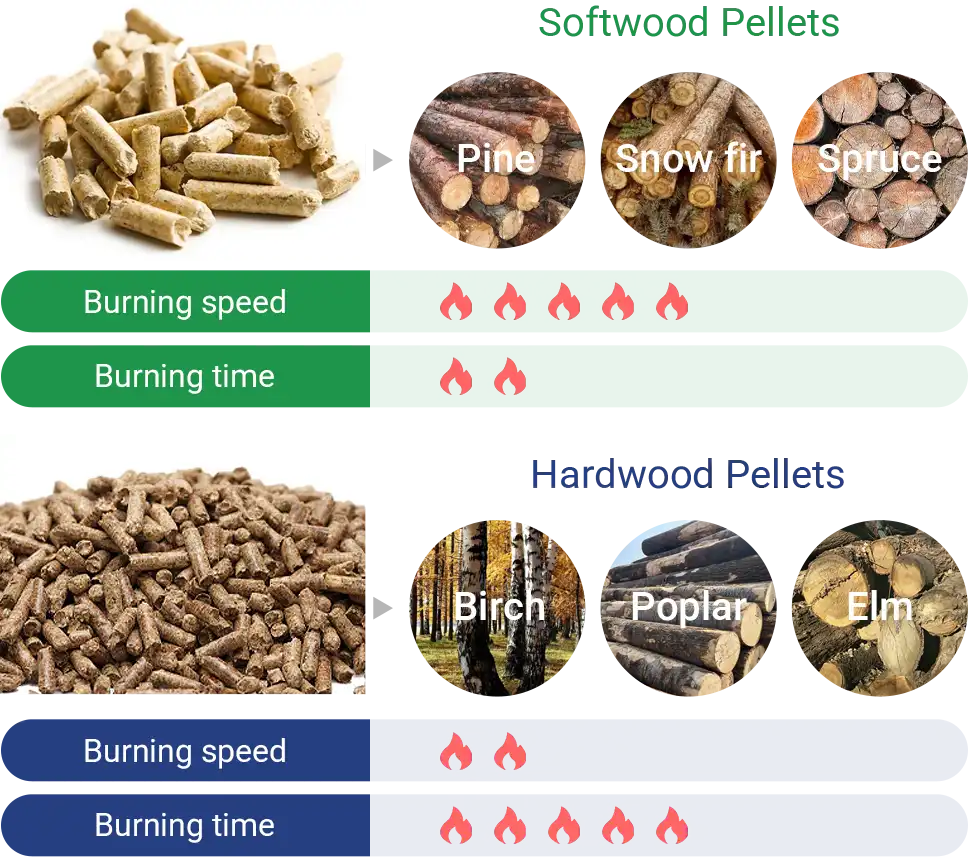
2.Ash Content and Cleanliness
Ash is the solid residue left after combustion, mostly made up of minerals naturally found in wood. The amount can also vary based on the cleanliness of the raw material-such as whether it includes bark, soil, or other impurities.
Softwood pellets generally produce less ash than hardwood pellets of the same grade. This is because softwoods tend to have lower mineral content, and ash levels drop further when the material is properly debarked. Hardwoods, by contrast, often contain slightly more minerals, and some may include bark, resulting in a higher ash output overall.
3.Price
Hardwood pellets are often marketed as a premium product and usually cost more than softwood pellets. This is partly because hardwood raw materials are more expensive. These trees grow more slowly, are denser, and are harder to process, which increases production costs.
Pricing also depends on how the product is positioned in the market. While hardwood pellets are seen as more high-end, some softwood pellets made from Douglas fir can match or even exceed their performance.
Ultimately, pellet prices are not based on wood type alone. Processing methods, raw material quality, and brand standards all affect the final price.
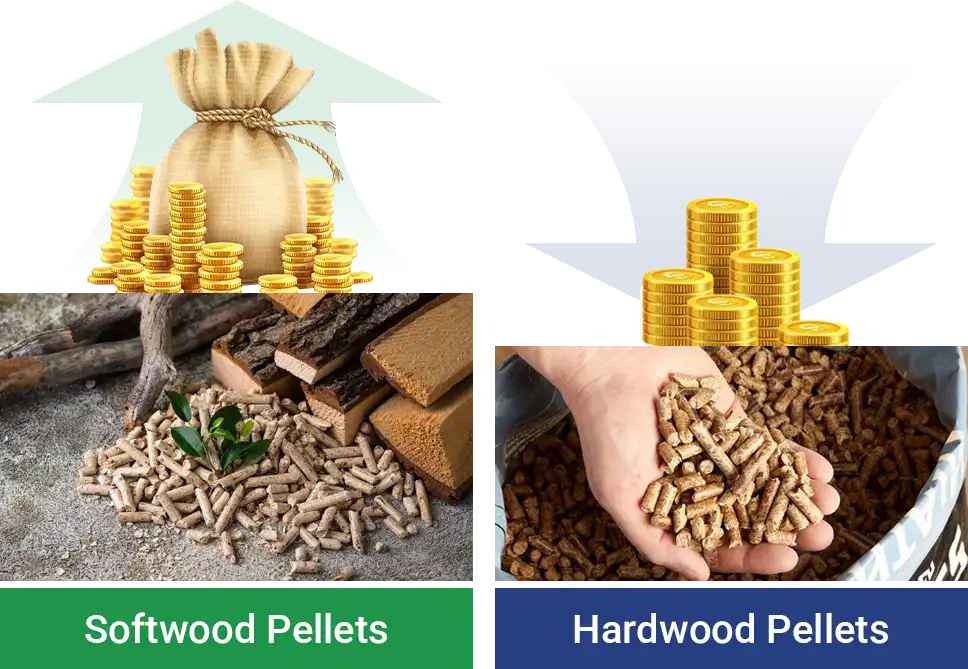
4.Particulate Emissions
The difference in emissions between softwood and hardwood pellets is usually small. However, studies show that at higher burn rates, hardwood pellets release more particulate matter than softwood pellets. At lower burn rates, their performance is similar.
This means softwood pellets tend to burn cleaner under high-output conditions. A likely reason is their higher content of volatile compounds, such as natural resins, which help promote more complete combustion at high temperatures.
5.Carbon Footprint
Hardwood pellets usually have a higher carbon footprint. This is mainly because their greater density requires more energy for drying and compression during production.
Softwood pellets have a lower carbon footprint in most cases. They are easier to process, and coniferous trees grow faster, which helps absorb carbon more quickly. This reduces their overall environmental impact.
Hardwood vs Softwood Pellets: How to Choose
If you're not sure which type to choose, consider the following factors:
Understand Your Heating System
Some stoves and boilers may require a specific type of pellet. It's a good idea to check your equipment manual or ask a professional to find out which type works best.
Consider Your Heating Needs
Softwood pellets usually offer higher heat output and produce less ash, which makes them ideal for clean and efficient heating. Hardwood pellets are denser and burn longer, so they are a good option if you prefer steady, long-lasting heat. The best choice depends on how you use your heating system.
Environmental Factors
If sustainability is important to you, compare the carbon footprint and resource use of different pellet types. Choosing certified products can help ensure a cleaner and more responsible heating source.
Both softwood and hardwood pellets have their advantages and suit different needs.
But beyond wood type, one factor matters even more: how the pellets are made. Pellet quality depends heavily on the production process, not just the raw material.

The Key to Pellet Quality: Equipment and Processing
Producing wood pellets involves several key steps, including grinding, drying, pelletizing, and cooling. Each stage affects the final quality, but the pellet mill itself plays the most important role. A reliable machine can produce pellets with higher density, smoother surfaces, better heat output, and less ash. This leads to more efficient stove performance.
One way to judge pellet quality is to check for certifications like FPI, ENplus®, or DINplus. These labels usually indicate consistent quality control and the use of dependable equipment and processes.
If you're interested in better control over quality, making your own pellets is also an option. It allows you to manage raw materials and ensure consistent results.
Kawise is a professional manufacturer and exporter of pellet mills. If you're planning to produce your own wood pellets, our machines are a solid choice. Feel free to contact us for details or assistance.
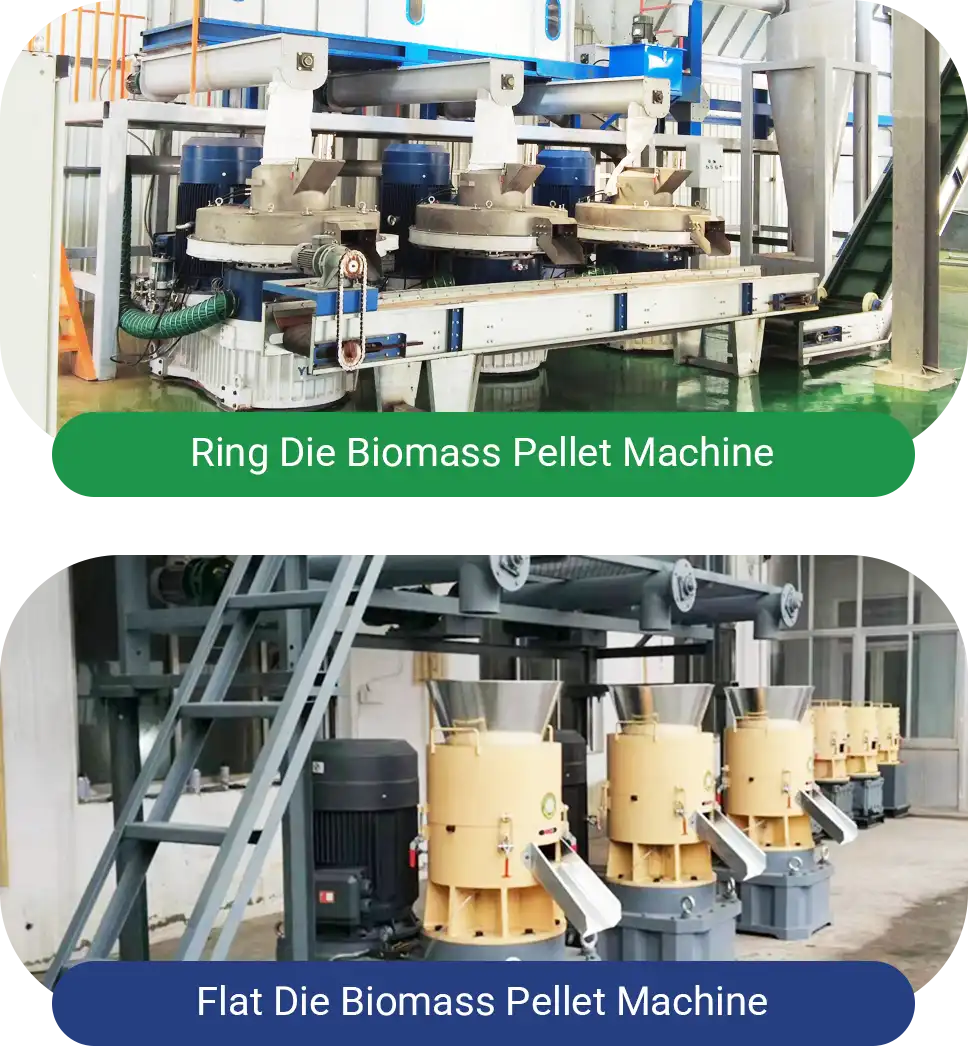
FAQ
- How to Choose the Right Wood Pellets for Your Pellet Stove?
If your stove has a combustion control feature, it can automatically adjust to different pellet types. You can then choose wood pellets based on your heating needs and preferences.
If your stove lacks this feature, check the user manual to confirm which pellet types, sizes, and heat values are compatible with your stove for the best match.
- Does the Pellet Stove Have Any Humidity Requirements for Pellets?
Yes, it does. Pellets with excessive moisture can affect combustion efficiency and may cause equipment malfunctions. The ideal moisture content for wood pellets is between 8% and 12%. A moisture meter can easily measure the pellet's moisture level to ensure it meets the required standards.
- How Do the Storage Requirements for Hardwood and Softwood Pellets Differ?
Softwood pellets are lighter and more hygroscopic, so they need a dry storage environment. Hardwood pellets, being denser, are less prone to moisture absorption. While their storage requirements are less strict, they should still be kept dry and well-ventilated.
- Can Softwood and Hardwood Pellets Be Mixed?
In most cases, softwood and hardwood pellets can be mixed, but this may affect combustion efficiency and heat output. If mixing pellets, ensure the stove's settings can accommodate the different burning characteristics of each type.
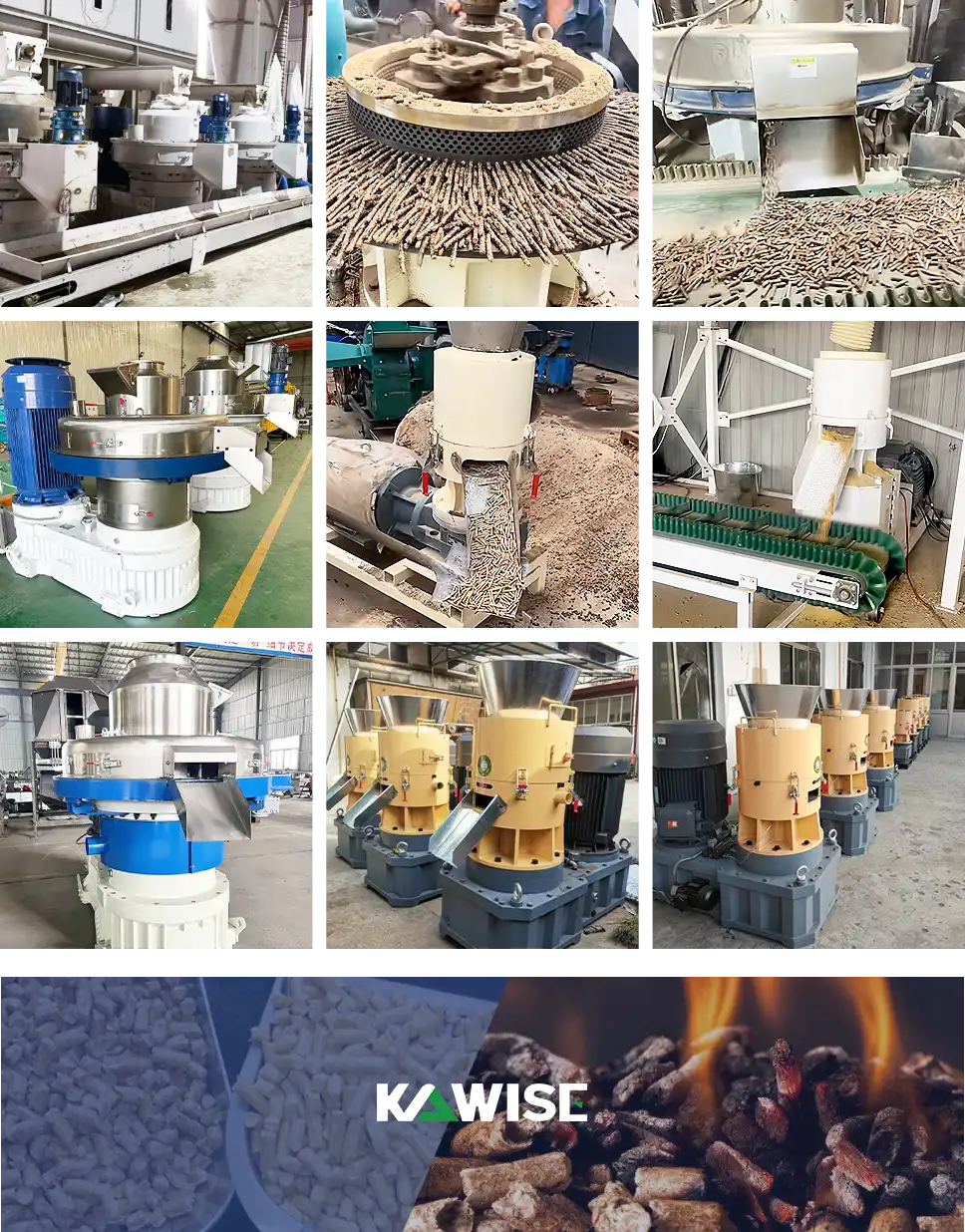
 Online Contact
Online Contact Send Message
Send Message
Need Some Help?
Contact us quickly and we will reply you within 24 hours. We will not disclose your information.